One of the essential elements for human health and well-being is calcium. It is present in all tissues and fluids of the body and is directly involved in many physiological processes. That is why it is very important to maintain the required level of calcium and prevent both its deficiency and excess in the organs.
- Why is calcium important for the body?
- Consumption rate
- Symptoms of deficiency
- Signs of excess Causes
- Symptoms
- What to do
- Meat, fish and eggs
Why is calcium important for the body?
Calcium is the main substance in bone tissue , which influences the proper formation of the bone frame and serves as a preventive measure for bone fragility. The macronutrient is especially necessary for pregnant, lactating women and children during their active growth.
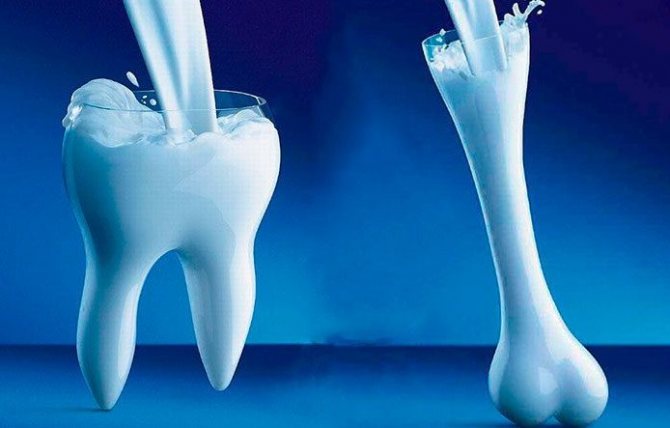
- Cardiac and muscular systems . The macroelement supports the functioning of the cardiovascular system, regulates the heartbeat, and allows muscles to work at the correct and smooth pace. Its deficiency can lead to rapid heartbeat, low blood pressure, deterioration of muscle function, and the appearance of spasms.
- Nervous system . The mineral substance takes part in the activity of the nervous system. It nourishes the nerve cell and helps conduct impulses. If the amount of calcium is not enough, then to regulate the functioning of the nervous system, the body begins to consume it from bone or dental tissue.
- Cholesterol . The human body contains “good” and “bad” cholesterol. And calcium makes it possible to reduce the level of bad cholesterol, thereby protecting against various problems: obesity, low blood clotting, strokes and heart attacks.
Did you know? In terms of volume, calcium ranks fifth among the elements present in the human body. Approximately 2% of an adult's body weight comes from this element.
The macroelement also has antiallergic characteristics , reduces the manifestations of allergies, and helps prevent diseases such as asthma, Quincke's edema, and hay fever. It has a beneficial effect on sleep, relieves insomnia, fights fatigue and nervous tension, and removes heavy metal salts, radionuclides and other harmful substances from the body.
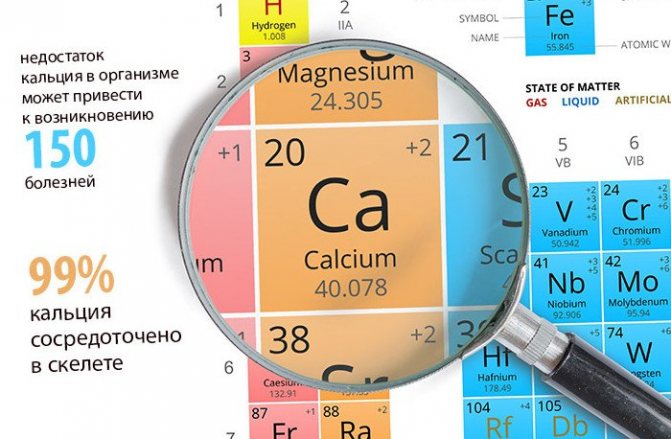
Consumption rate
The required amount of Ca that a person should consume daily is calculated based on his age and lifestyle.
- For children . The daily norm of the mineral will depend on the child’s age, vital activity and gender. For newborns and babies up to six months, it is enough to consume up to 400 mg every day, for babies from 6 to 12 months, the dosage should be increased to 600 mg, for children from 1 to 10 years old - about 800 mg and for adolescents aged 11 to 16 years - up to 1200 mg .
- For pregnant and lactating women . Women who are pregnant or breastfeeding need increased calcium concentrations. Their daily dose increases from 1500 mg to 2500 mg, where 1500 mg is needed for pregnant women in the first two trimesters and 2500 mg for pregnant women in the third trimester and nursing mothers. This is due to the fact that during pregnancy and breastfeeding, a woman must consume a large amount of ordinary water, as a result of which a certain amount of vital minerals is washed out of the body.
- For women and men . According to the World Health Organization, it is advisable for an adult to consume 800-1200 mg of calcium per day. At the same time, men's need for mineral substances is 200 mg more than women's. At an older age, after 50 years, when the body begins to rapidly lose calcium, it is recommended to consume it at least 1200 mg per day. For people actively involved in sports, the daily dose increases by 200 mg.
Did you know? In women during pregnancy and adults after 25 years, the absorption of the mineral decreases, so the body begins to use accumulated reserves - approximately 1.5 kg of total weight.

Symptoms of deficiency
Symptoms of calcium deficiency (hypocalcemia) do not appear immediately. First, the body makes up for the shortage from its own resources, while the bones begin to lose weight, and the following symptoms :
- tremors in the limbs and muscle spasms. Macronutrient deficiency leads to exhaustion and disruption of the neuromuscular system, resulting in cramps, numbness of the limbs, and bone pain;
- twitching of the corners of the eyes, wings of the nose;
- regular numbness of fingers and toes;
- tooth decay, development of caries;
- problems with nails and hair, in particular, active hair loss, fragility of the nail plate;
- the occurrence of arrhythmia, since calcium is required for normal contraction of the heart muscle. In advanced cases, heart failure may develop, which cannot be treated;
- peeling, inflammation and dryness of the skin;
- increased bleeding resulting from a blood clotting disorder.
A lack of mineral during the period of active growth of a child can provoke the development of scoliosis, flat feet, and general poor posture. The initial symptoms of hypocalcemia also include increased anxiety, excitability, irritability, which arise as a result of impaired functioning of the nervous system.
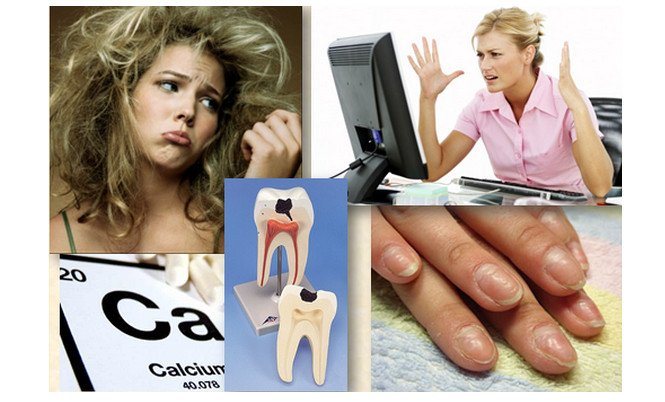
Deficiency Symptoms

The main symptoms include:
- feelings of anxiety, irritability, nervousness, fatigue;
- peeling of the skin;
- deterioration of the condition of nails and hair;
- damage to tooth enamel and the occurrence of caries;
- the occurrence of spasms and convulsive conditions in the limbs;
- constipation.
Signs of excess
An excess of calcium is observed much less frequently than a deficiency, and, as a rule, it is associated with an overdose of calcium-containing drugs or certain diseases, for example, cancer, hormonal disorders.
Causes
An increased content of macronutrients is observed with prolonged use of dairy products - milk, sour cream, hard cheese.
Also, excess Ca can occur:
- after radiation therapy in the neck and shoulders;
- with long-term treatment of stomach ulcers;
- due to disruption of the endocrine system;
- with an overdose of vitamin D.
Among other things, the water supplied by the central water supply is quite hard and contains high levels of calcium. Therefore, if you drink such water daily and combine it with other calcium-containing drugs, a person may develop hypercalcemia. To avoid this problem, it is recommended to filter water before drinking.
It is noteworthy, but hypercalcemia in most cases is observed in older people and women.
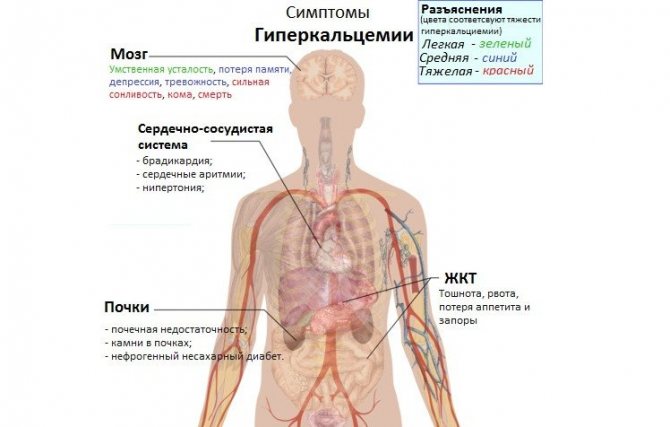
Symptoms
Severe symptoms of hypercalcemia include:
- weakness of the body;
- increased feeling of thirst;
- nausea, often accompanied by vomiting;
- constipation, digestive problems;
- lack of appetite;
- disorders of the kidneys;
- arrhythmia, problems with the functioning of the heart muscle;
- mental abnormalities, up to the development of hallucinations.
In childhood, the manifestation of excess mineral matter is accompanied by similar symptoms as in adults: fatigue, absent-mindedness, nausea, vomiting, poor appetite, weight loss.
Did you know? Due to its high chemical activity, calcium does not occur in free form in nature.
What to do
The signs of hypercalcemia are to some extent very similar to the symptoms of hypocalcemia, so the most accurate way to determine calcium levels is to conduct appropriate clinical studies and tests . In a natural way, excess Ca is excreted by organs very poorly. Basically, the excess is concentrated in the kidneys, which leads to the development of urolithiasis. In addition, the mineral accumulates inside the walls of blood vessels, which provokes stenosis, that is, their narrowing.
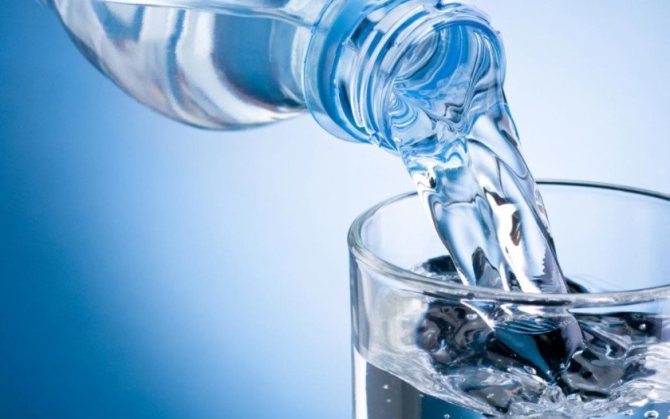
Plain clean water and special medications prescribed by your doctor will help remove excess Ca. In this case, contacting a specialist is mandatory, because he will be the one who will be able to prescribe competent therapy based on the patient’s test results.
Among the drugs used to remove minerals, the most effective are:
- diuretics that will promote the excretion of calcium in the urine;
- hormonal drugs.
The doctor may also perform dialysis, a procedure that removes metabolic waste products and fluids from the body that cannot be eliminated naturally through the kidneys.
And, of course, if there is an excess of the mineral, it is necessary to adjust the diet: reduce the consumption of foods containing large amounts of Ca.
We advise you to read about products containing minerals: magnesium, phosphorus, iron, sulfur.
What products contain
You can replenish calcium deficiency in the body with the help of various foods.
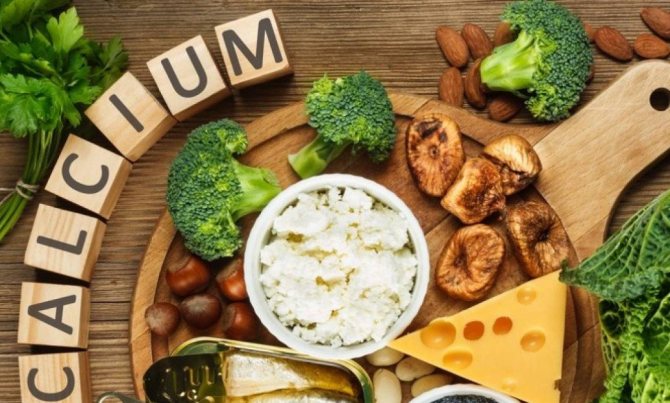
Meat, fish and eggs
Calcium, which is easily absorbed by the body, is found in large quantities in fish, especially salmon and sardines, eggs, chicken or beef. To get the maximum benefit from these products, it is recommended to consume them boiled or baked.

Sardine and salmon are ahead of milk and dairy products in calcium composition. 100 g of seafood contains 325 mg and 595 mg, respectively. Consumption of these products helps not only strengthen bones and teeth, but also improve the general condition of hair, skin, and nails.
Chicken can boast of its Ca content, with 15 mg of the substance per 100 g, beef - 18 mg, lamb - 17 mg and duck - 11 mg.
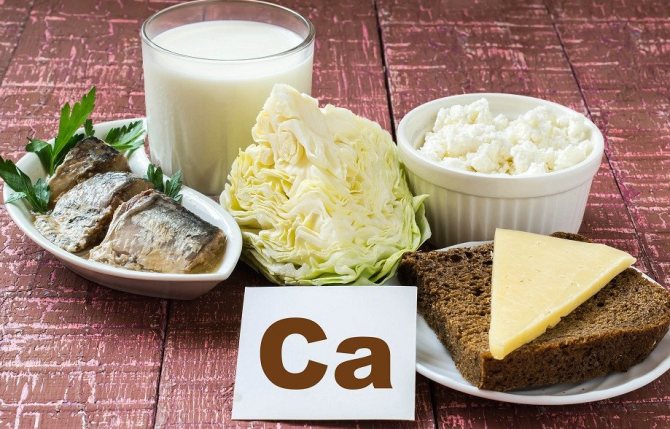
Eggs are considered an ideal source of calcium, especially eggshells, which are 90% calcium carbonate. It is almost 100% absorbed by the body, allows you to strengthen bones and teeth, and normalize the functioning of the nervous system. Experts advise consuming dried, crushed eggshells mixed with other foods. As for eggs, they are inferior to the shell in terms of mineral content, so 100 g contains 50 mg of the substance.
Find out more about the benefits of eggs: chicken, quail (for women, men).
Nuts and seeds, legumes
Many types of nuts are rich in Ca - almonds, hazelnuts, peanuts, walnuts and legumes, especially soybeans, beans, and peas. In addition to the fact that nuts are distinguished by a sufficient content of this mineral, they contain Omega-3 fatty acids necessary for the human body, which help the absorption of calcium, as well as magnesium, which strengthens bone tissue. Experts advise eating 3-4 nuts every day, raw and lightly roasted.

Soy and all legumes help nourish the body, strengthen bones, and have a positive effect on the stable growth of the skeleton and teeth. The most useful legumes are cooked.
What foods contain calcium for pregnant women?
During pregnancy, a woman needs a lot of vitamins and minerals. Calcium is no exception, and its role for the woman’s body and the future fetus is enormous. Its deficiency can cause serious problems for the body of the woman and the unborn child. Let's try to figure out which foods contain calcium for pregnant women.
Why is calcium deficiency dangerous?
A lack of calcium may cause impaired bone formation in the unborn child. Children with calcium deficiency experience delayed development. The mother's body suffers no less than the child's. After all, if there is a deficiency of any nutritional element, the child takes it from the mother. As a result, women suffer first from their teeth, followed by their hair and nails. This is why many pregnant women experience tooth loss and problems with nails.
In order to avoid calcium deficiency, an adult should consume at least 800 mg of calcium per day. During pregnancy, a woman needs almost twice as much calcium - about 1300 mg. You can compensate for calcium deficiency both with the help of special medications and by eating foods rich in this element.
What foods contain calcium for pregnant women?
There are many foods that are rich in calcium. According to a misconception, most people believe that milk and cottage cheese are richest in calcium. In fact, one hundred grams of milk contains only 100 mg of calcium. If we compare this indicator with cheeses, it is almost 7 times inferior. One hundred grams of hard cheese contains about 700 mg of calcium. Chastnosti.com magazine advises choosing the foods richest in calcium and avoiding the use of various medications during pregnancy.
A large percentage of calcium is found in sesame and poppy seeds. The seeds of these plants are ground to a powder, then filled with water and filtered through a sieve. The result is a nutritious and valuable drink, rich in calcium and other beneficial elements. Calcium is found in cabbage, almonds and bread. Products containing calcium for pregnant women should be included in the diet every day.
Not always foods containing calcium during pregnancy can compensate for the deficiency with minerals. In this case, it is necessary to take special calcium supplements. It is worth understanding that you will get some calcium from food. Excess calcium can also negatively affect the body of a pregnant woman and lead to calcification of the placenta.
In order for calcium to be absorbed, the body needs vitamin D3. Low iron levels in the body negatively affect calcium absorption. Special preparations containing calcium are best taken after meals. Stress, poor lifestyle and poor nutrition negatively affect the process of calcium absorption. Avoid drinking coffee as it removes calcium from the body. You should not overuse cola and tea, as these drinks also negatively affect the absorption of calcium.
Lack and excess of calcium negatively affects the condition of a pregnant woman. To rule out any health problems, visit a specialist and never self-medicate. You should not use medications and dietary supplements without the advice of a specialist.
Preparations containing calcium
Calcium-containing preparations help fill the mineral deficiency.
Monomedicines in which calcium is presented in its pure form, without additives:
- calcium carbonate;
- calcium citrate;
- "Vitacalcin";
- "Scoralite."


Combined preparations, where, in addition to the main component, vitamin D and other minerals are added:
- "Calcium D3 Nycomed";
- "Calcemin";
- "Calcium D3 Classic";
- "Natekal D3".
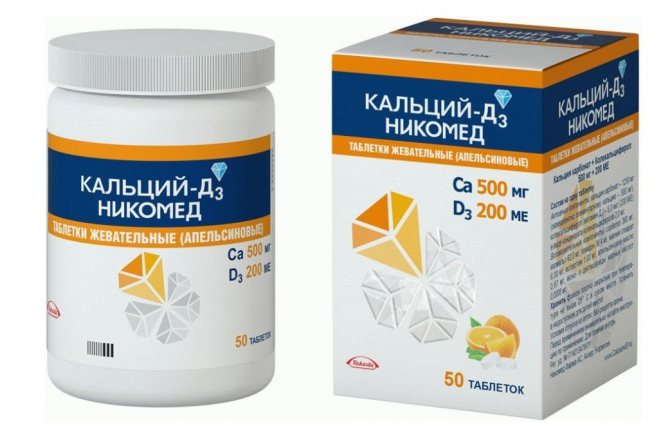
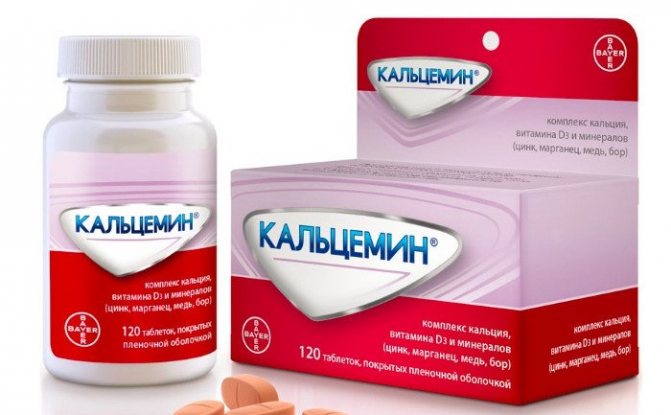
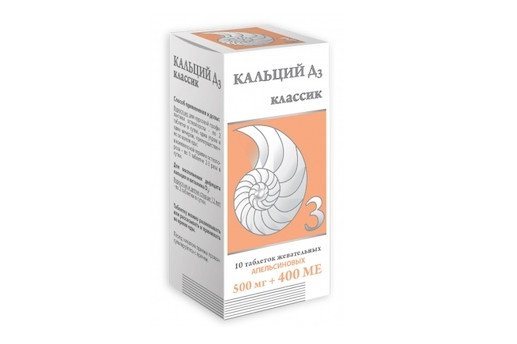
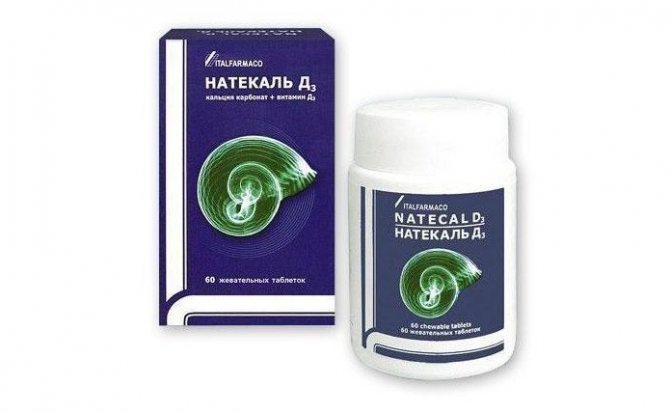
Find out more about vitamin D: the dangers of deficiency, the 10 best source foods and the benefits of vitamin D, vitamin D for infants.
Multivitamin products, where the substance is in combination with other minerals and vitamins:
- "Vitrum";
- "Elevit";
- "Multi-Tabs".
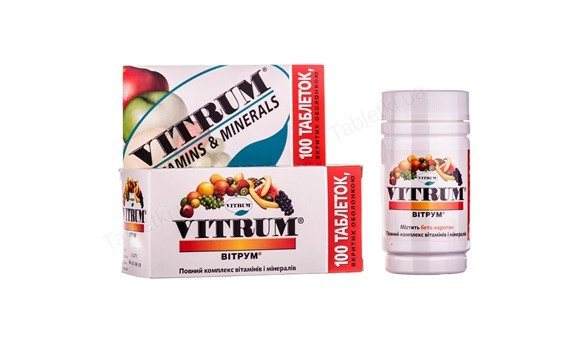
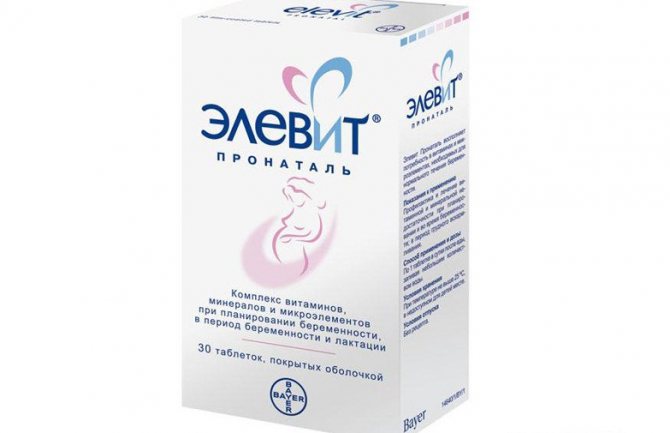

All medications are taken according to instructions only after prior consultation with a doctor, who will determine the severity of the disease and the daily need for medication. During therapy, it is recommended to regularly monitor the amount of calcium in the urine and blood.
Enrich your diet with vitamins: find out which foods contain folic acid, vitamins,,.
Interaction with other elements
The rapid and effective absorption of calcium is preceded by various conditions: the presence of certain vitamins, amino acids, oxygen saturation of cells, diet. Getting a mineral through food is not difficult, but in order to make it “work” you need to :
- Correct the balance of vitamin and mineral composition. Alone, the substance is very poorly absorbed, practically not absorbed at all. It functions well in combination with phosphorus and magnesium. If the mineral balance is disturbed, then the calcium eaten becomes simply useless. Moreover, with a lack of magnesium, it is not only not absorbed, but also excreted by the body.
- Minimize the consumption of certain foods. There are foods that interfere with the absorption of the mineral: salt, caffeine-containing foods, fats. Insufficient or excess fat in the body reduces the absorption of the substance, so nutritionists recommend reducing the consumption of margarine, various cooking fats, and beef lard. If you don’t want to give up tea or coffee, then it is recommended to drink 0.5 cups of milk or yogurt for every 3rd, 4th, etc. cup of drink.
- Take dietary supplements with Ca. As is known, children during the period of active growth, pregnant and lactating women, and athletes need to increase the daily dose of the mineral. It is not always possible to fill the shortage solely with food, so it is necessary to take special medications - dietary supplements. It is better to give preference to drugs in intra-complex (chelate) form, where they are protected by a shell from interaction with gastric juice, due to which they are well absorbed.
- Engage in minimal physical activity. Sports activities, such as running, swimming, race walking, exercises with dumbbells, promote excellent absorption of calcium and saturation of cells with oxygen. However, you need to remember that the mineral comes out with sweat, so it is recommended to drink a glass of milk, kefir, yogurt or eat a handful of nuts after exercise.
- Supplement the diet with Ca “conductors”. There are elements that help “conduct” the mineral into the body. These directly include vitamin D , which increases calcium absorption by 30-40% and helps balance phosphorus. It is important to note that D is not a simple vitamin, it is a prohormone, thanks to which the parathyroid glands produce hormones responsible for calcium metabolism.
- Avoid stress. During stressful situations, the body produces the hormone cortisol, which reduces calcium absorption. The longer a person is stressed, the more mineral they lose and the more fragile their bones become.
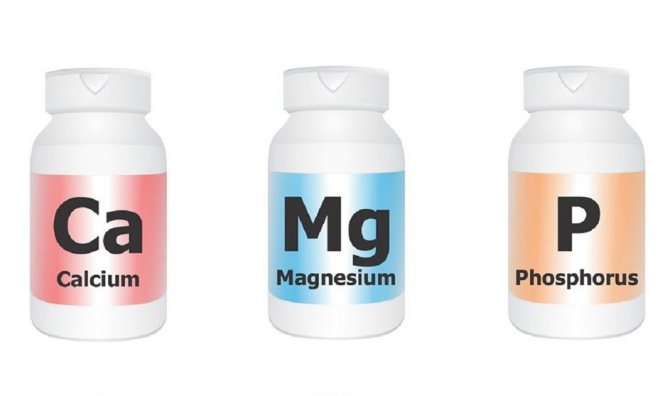
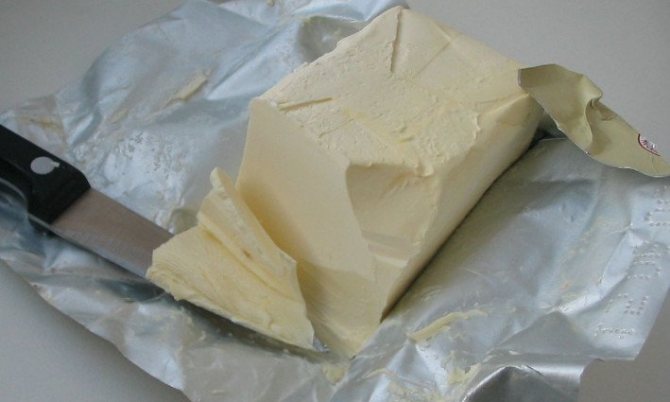
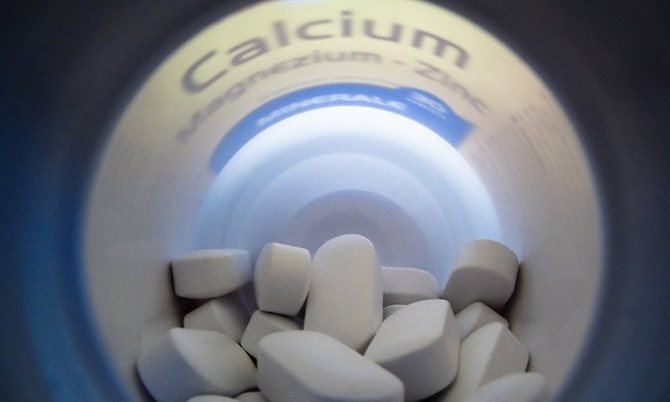

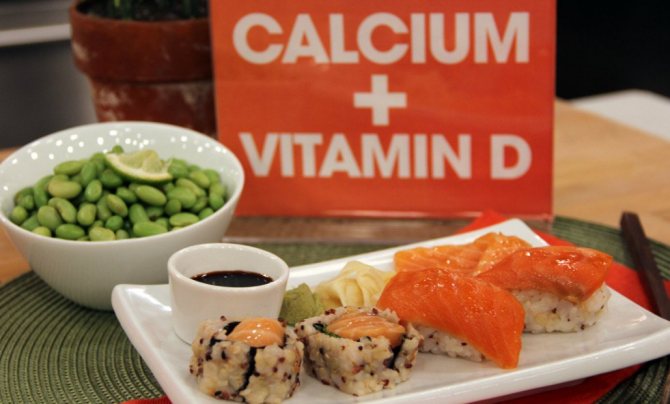
More sources of calcium
Remember that vitamin D will improve calcium absorption by 30-40%. The sun's rays promote the production of the vitamin; in the summer, half-hour walks are enough. In winter, solar activity is low, so you should find other sources (milk, pharmaceutical preparation).
Food containing magnesium, copper, zinc, boron will promote better absorption of calcium in the body.
Caffeine-containing drinks (tea, coffee, cola) interfere with its absorption. If you can’t completely give them up, then limit your consumption of drinks.
Some foods containing acid (currants, gooseberries, sorrel and others) can slow down the breakdown and inhibit the body's absorption of alkaline earth metal into the circulatory system. As a result of a biochemical compound, insoluble elements (stones) - oxalates and phytates - can be formed. Iron-containing medications significantly reduce the absorption of calcium. Iron ions displace alkali metal from the mucous membrane of the small intestine. Fats and proteins also resist the absorption of such a useful compound.

Foods that help absorb calcium
Some foods help with good absorption of calcium, in particular those that contain the mineral in the form of lactate - all dairy products. In this form, it is completely absorbed and reaches its destination. A little worse, 70-80%, the substance is absorbed from vegetables, herbs, nuts and fish.
Absorption of this mineral occurs in the small intestine, so it is very important that its epithelial cells function correctly. The absorption process is also affected by some thyroid and sex hormones, vitamins, and protein. Experts recommend, first of all, to restore the balance of vitamins and improve the functioning of the glands. The transfer of calcium through the walls of the stomach is accompanied by significant energy expenditure, therefore, in order to facilitate this process as much as possible, you should eat foods with a moderate amount of easily digestible carbohydrates :
- soy cheese - tofu. Half a cup of cheese will provide the body with almost the daily required portion of calcium - about 800 mg. In addition, the product contains protein necessary for the formation of muscle tissue, muscle building, strengthening bones;
- fatty fish. Tuna, salmon, and sardines are considered excellent sources of minerals, which, in addition to calcium, are rich in vitamin D, fatty amino acids Omega-3 and Omega-6, necessary for complete absorption of the substance;
- porridge. Half a cup of oatmeal, corn or buckwheat flakes provides the body with a dose of calcium and fiber, improves the functioning of the digestive system, normalizes cholesterol levels, and promotes rapid metabolism;
Important! Oatmeal, if taken simultaneously with a vitamin-mineral complex, binds all minerals that are simply excreted from the intestines without effect. In such cases, it is recommended to wait 2 hours between taking vitamins and porridge.
- nuts and seeds. The leaders in calcium content are sesame seeds, poppy seeds and almonds. It is enough to eat a handful of nuts a day or drink 1 tsp daily on an empty stomach. sesame or linseed oil;
- dairy products. Among dairy products, the most valuable in terms of calcium absorption are hard cheeses, yoghurts, condensed milk, sour cream, and cottage cheese. One glass of milk can cover 1/3 of the daily requirement for the mineral. For an adult, it is better to replace 1 glass of milk with the same amount of yogurt or 30 g of hard cheese;
- green vegetables and herbs. It is definitely recommended to include kale or savoy cabbage, parsley, dill, basil, leeks, and turnips in your diet. They contain easily digestible calcium, as well as a number of elements that promote its good absorption.
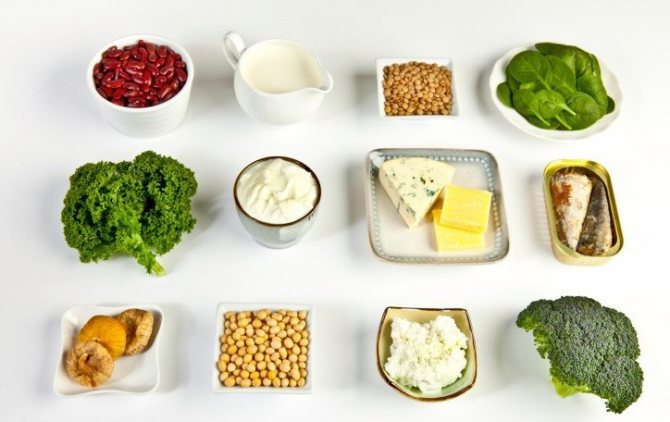
Table. Calcium in food
| Products | Portion weight | Calcium (mg) |
| Milk/drinks | ||
| Skimmed milk | 200 ml | 244 |
| Whole milk | 200 ml | 236 |
| Milkshake | 300 ml | 360 |
| Almond milk | 200 ml | 90 |
| Yogurt, cream, dessert | ||
| Fruit yoghurt | 150 g | 197 |
| Natural yogurt | 150 g | 207 |
| Whipped cream | 30 ml | 21 |
| Cream | 30 ml | 21 |
| Vanilla ice cream (creamy) | 100 g | 124 |
| Pancakes | 80 g | 62 |
| Cheesecake | 200 g | 130 |
| Waffles | 80 g | 47 |
| Cheeses | ||
| Hard cheeses (Cheddar, Parmesan, Emmental) | 30 g | 240 |
| Soft cheeses (Camembert, Brie) | 60 g | 240 |
| Feta | 60 g | 270 |
| Mozzarella | 60 g | 242 |
| Cottage cheese | 200 g | 138 |
| Processed cheese | 30 g | 180 |
| Vegetables, greens, beans | ||
| Broccoli | 120 g (fresh) | 112 |
| Rhubarb | 120 g (fresh) | 103 |
| Carrot | 120 g (fresh) | 36 |
| Red beans | 80 g fresh / 200 g ready | 93 |
| Chickpeas | 80 g fresh / 200 g ready | 99 |
| White beans | 80 g fresh / 200 g ready | 132 |
| Green bean | 90 g ready | 50 |
| Seaweed | 100 g | 150 |
| Nuts and grains | ||
| Almond | 30 g | 75 |
| Brazil nuts | 30 g | 28 |
| Hazelnut | 30 g | 56 |
| Walnut | 30 g | 28 |
| Fish and eggs | ||
| Egg | 50 g | 27 |
| Canned sardines in oil | 60 g | 240 |
| Canned tuna | 120 g | 34 |
| Herring | 120 g | 20 |
| Smoked salmon | 60 g | 9 |
| Shrimps | 150 g | 45 |
| Starchy foods | ||
| Pasta | 180 g | 26 |
| Boiled rice | 180 g | 4 |
| Boiled potatoes | 240 g | 14 |
| White bread | slice, 40 g | 6 |
| Whole wheat bread | slice, 40 g | 12 |
| Muesli | 50 g | 21 |
| Fruits | ||
| Apricot | 3 pcs, 120 g | 19 |
| Figs | 60 g | 96 |
| Raisin | 40 g | 31 |
| Currants (dried goosberries) | 120 g | 72 |
| Orange | 150 g | 60 |
| Apple | 120 g | 6 |
| Banana | 150 g | 12 |
| Miscellaneous | ||
| Tofu | 120 g | 126 |
| Omelet with cheese | 120 g | 235 |
| Pasta with cheese | 330 g | 445 |
| Pizza | 300 g | 378 |
| Lasagna | 300 g | 228 |
| Cheeseburger | 200 g | 183 |
Daily calcium requirement
To avoid hypercalcemia, do not exceed the maximum dose of calcium. No more than 2500-3000 mg for children and adolescents, and 2000-2500 mg per day for adults. On average, the daily calcium intake for adults is 800-1000 mg. Those over 60 years old, as well as professional athletes who train intensively, need to increase it to 1200 mg.
The calcium requirement is higher:
- during active sports
- with profuse sweating
- in children
- during pregnancy and breastfeeding
There are a lot of foods that contain calcium. However, the body often lacks it. Before calcium begins to be absorbed in the intestines (under the influence of bile), it dissolves in the hydrochloric acid of gastric juice. Because of this, alkaline substances that neutralize acids interfere with the absorption of calcium.
Foods that impair calcium absorption:
- soda, candy and sweets, stimulating the secretion of alkaline digestive juices
- excess of products containing phosphorus - calcium forms salts with it that are insoluble in acid
- lack or excess of fatty foods - the best ratio of calcium to fat for each meal is 1:10 (example - 10% cream)
Foods that promote calcium absorption:
- dairy products - they contain lactose (milk sugar), which is converted into lactic acid by intestinal bacteria.
- amino acids (proteins) and citric acid
- During pregnancy, women absorb calcium better
In women, blood calcium levels drop in the week before menstruation and continue to drop further during menstruation, which can cause painful uterine contractions, especially in teenagers.
Products that wash away Ca
In contrast to foods that help the absorption of calcium, there are a number of others that wash it out of the body.
These primarily include:
- coffee and tea due to their high caffeine content;
- salt. Cabbage soup, smoked meats and pickles are not compatible with mineral components and contribute to their removal;
- alcohol. It provokes dehydration, removal of fluid from organs and, as a result, leaching of minerals;
- carbonated drinks. They contain phosphoric acid, the main enemy of calcium;
- meat. If you consume any meat in large quantities every day, calcium deficiency can be felt very quickly. The fact is that phosphorus disrupts the acid-base balance towards oxidation, and the body, in order to restore normality, begins to actively remove calcium from reserves - bones. In addition, the combination of proteins and fats in meat significantly reduces the absorption of the mineral;
- products with high sugar content. Sugar-containing foods provoke the loss of zinc, chromium, selenium and calcium.
Important! To ensure the necessary supply of calcium in the body, nutritionists advise adhering to the following rule: the amount of foods eaten that help absorb the substance should exceed the amount of foods eaten that flush it out.
You should also pay attention that the use of iron and calcium at the same time contributes to the fact that the digestibility of both decreases significantly.
Table of foods containing calcium
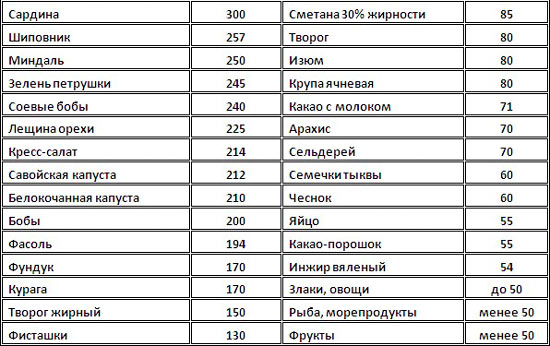
Notes in the margins
Having looked at this table, we can come to the conclusion that dairy products (other than cheese) do not contain as much calcium as many assume, but their advantage is that they contain this mineral in the most easily digestible form. The paradox is that fattier dairy products contain less of this mineral, but due to this fat content, it is better absorbed from them.
Why are cheeses so much richer in calcium than other dairy products? I think it all comes down to the way the cheese is made. When, for example, cottage cheese is made by the housewife from pure milk, almost all the calcium remains in the whey. Therefore, homemade cottage cheese contains less calcium than cottage cheese from the supermarket - it contains calcium chloride, which promotes a faster curdling process. The same can be said for cheeses.
Another myth: fish and meat contain a lot of calcium. Indeed, the blood plasma of mammals, fish, and birds contains this mineral, but tissue cells contain very little of it - up to 50 mg per 100 g of product. The only exception is sardines.
Many fruits and vegetables contain small amounts of calcium, but they are rich in other substances that help us absorb this mineral well, especially since we can eat much more of them than, for example, poppy seeds or sesame seeds.
The intestinal tract of an adult can absorb less than half of calcium from food; pregnant and nursing mothers, as well as children, absorb this element better, while older people may note that their calcium absorption is significantly reduced. I talked about the causes and symptoms of calcium deficiency in the article “Symptoms of calcium deficiency, why is it not absorbed?”
But there is a downside - too much calcium.










